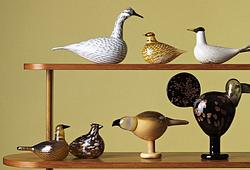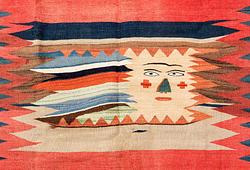Anders Zorn
"Från Sandhamn"
Signed Zorn and dated 1906. Oil on canvas 73 x 54 cm.
Provenance
Christie's, New York, 19th Century European paintings-drawings-watercolors and sculpture, 25 October 1989, lot 92.
Stockholms Auktionsverk, Stora Kvalitén, 31 May - 1 June 1994, lot 5606.
Literature
Tor Hedberg, 'Anders Zorn', part 2, 1924, mentioned p. 93 illustrated p. 98.
Gerda Boëthius, 'Zorn'. Tecknaren. Målaren. Etsaren. Skulptören", 1949, mentioned p. 462 and 464, listed in the catalogue under the year 1906.
Anders Zorn, ”Självbiografiska anteckningar”, edited by Hans Henrik Brummer, 1982, mentioned p. 232.
Hans Henrik Brummer, "Till ögats fröjd och nationens förgyllning - Anders Zorn", 1994, mentioned p. 307.
Anders Zorn, "Självbiografiska anteckningar" (utgivna av Birgitta Sandström), 2004, illustrated p. 222.
More information
This painting from 1906 is an excellent example of the theme within Anders Zorn's artistic oeuvre sometimes referred to as " nudes in open-air". It was in the late 1880s, during summer stays at Dalarö, that Zorn began to depict the naked woman in the sunny archipelago nature. He returned to this motif throughout the rest of his career, bringing him great success and fame.
The " nudes in open-air" paintings were often not only studies of the human body and the greenery of summer but also of the movements of the water surfaces. In his autobiographical notes, he writes in 1886:
"Upon returning to Sweden, we stayed with my mother-in-law at Dalarö, and I immediately began to engage with nature, solving new problems. What seems to have particularly attracted me now was the play of water and reflections, to truly make it move, to set the waves and everything in perspective and scientifically explain everything with meticulous precision. Also, intricate tangles in pine forests and thorn bushes, always with a few figures whose vibrant colors punctuated the otherwise monotonous canvas."
During this summer stay in 1886, Zorn painted, among other masterpieces, "Sommarnöje" and "Kapprodd". Zorn himself claimed that he worked "scientifically" when it came to depicting water. Hans Henrik Brummer writes: "the artistic rendition of geological and meteorological conditions in the landscape revealed a truthfulness to nature. And for Zorn, the act of painting meant, above all, the inventory and presentation of an infinite number of optical observations of conditions in nature."
‘Zorn's pictures from /.../ are also ultimately about the movement of water: the play between crests and troughs of waves with their bright sun reflections and dark shadows fades with perspective and eventually merges with the high horizon, both through the increasingly luminous colour and through the seemingly diminishing movement of the water surface.’ Johan Cederlund (ed) ‘Zorn's Masterpieces’, 2010, p. 42.
As a painter of denominations, he started from the light values of the subject. In French, the recipe is called enveloppe. In Jules Adéline's ‘Lexique des termes d'art’, envelope means to embellish the subject by soft modelling, by making the objects and figures of the picture less sharply outlined so that they blend into the surrounding atmosphere. In his plein air paintings, Zorn succeeded in achieving a coherent play of light without the alternation between media becoming too conspicuous - the colour is evenly and unobtrusively distributed over the picture surface. The depiction of light outdoors and the rendering of fabrics and skin were hardly new problems for the watercolourist Zorn. When he switched to oil painting, it was possible to dilute the pigments with turpentine. Over the canvas, he could alternate between areas where the colour was dense and others where the pigments were thinned. When he abandoned the watercolour technique in favour of the sluggish oil painting, he lost transparency but gained a saturation of colour.
For him, the transition to oil painting was mainly a matter of supplementing his familiar watercolour technique with the limited palette of the watercolourist. The sluggish oil paint required stronger brushes, round and flat, and instead of the watercolour painter's sponge, the knife was available as an auxiliary tool.
In ‘From Sandhamn’, Zorn has played out all the nuances of his artistic palette to the full, and the overall grandeur is conveyed in a snapshot. In his beloved archipelago, the artist has found a timeless motif that allows him to explore various painterly aspects of light-filled plein air painting. He masterfully depicts the reflection of light in the water and on the model's body, where the sun shines on her legs through the foliage outside the painting. At first glance, the motif seems to convey precisely what the artist always endeavoured to achieve: a direct extract from reality. At the same time, it harbours a mystery. What does she see? Why is she hesitating there on the cliff?
In his book ‘Till ögats fröjd och nationens förgyllning - Ander Zorn’, Brummer writes in 1906 about the auction's painting ‘Från Sandhamn’: The summer's sailing takes place in the Stockholm archipelago. In July he is in Sandhamn. ‘I think what I have done here is the best. I was going to make my last effort at an evening meeting but there was (a) nasty priest from Clara with his sons fishing perch.’ This evensong is entitled FROM SANDHAMN.’ s. 307.
Photo: Zorn at the helm of his cutter Mejt off Sandhamn. Zorn Museum ZFO 1243.
Artist
Anders Zorn, born in Mora in 1860, showed artistic talent from a young age. In 1875, he traveled to Stockholm and became a student at the then Slöjdskolan (now Tekniska högskolan) in Stockholm, and shortly after, he joined the Royal Academy of Fine Arts. Initially, Zorn had aspirations of becoming a sculptor, but soon watercolor painting took over, becoming his primary medium until 1887. At the student exhibition in 1880, Zorn had his breakthrough with the watercolor painting "I sorg." The following year, he gained international acclaim as a portrait painter. His watercolor painting reached its pinnacle during this period, and his most famous work from this time is "Vårt dagliga bröd” from 1886. Shortly thereafter, Zorn transitioned to oil painting, which was met with immediate success. Zorn's reputation mainly rested on his portrait art, and he portrayed many notable figures, including presidents. For instance, he created an etching of Theodore Roosevelt. His etchings significantly contributed to his success. In the late 1880s, Zorn began working in the genre that would increasingly become his trademark: nude figures in outdoor settings. He had long been fascinated by the movement of water and the reflections of light on its surface. Now, he added the complexity of placing a model near or in the water, aiming to depict a synthesis between nature and humanity. In 1896, Zorn and his wife moved back to Sweden and settled in Zorngården in Mora. This move sparked a renewed interest in his homeland, which would be reflected in his future paintings. Among the artist's scenes from the Mora region, portraying its local customs and ancient traditions, "Midsommardansen" holds the highest value according to Zorn himself. Today, the painting can be found at the National Museum.
Read more



























































